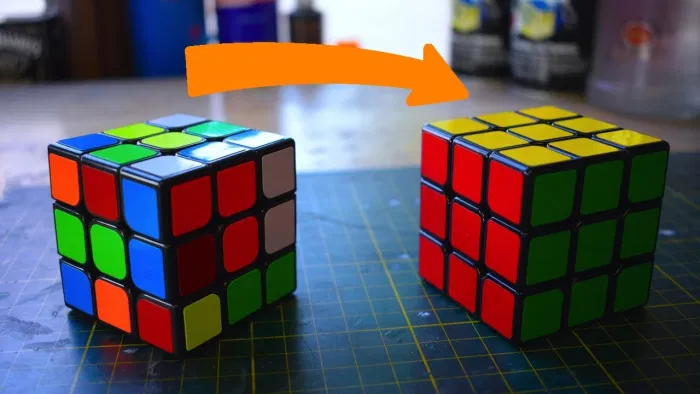If you’re a puzzle lover, you probably have a Rubik’s cube on your desk, and you’re wondering how to solve a 3×3 rubik’s cube. The trick is to figure out what piece you need to rotate to get the other edge pieces.
Rotate the upper row to get the edge pieces
One of the most basic jigsaw puzzle steps is to rotate the upper row to get the edge pieces of a 3×3 Rubik’s cube. This is a great way to get the most out of your jigsaw puzzle experience. However, you may have to rotate the edges of your puzzle pieces multiple times.
To get the edge pieces of a 3×3 Rubik’s cube, you will need to follow an algorithm. There are several types of algorithms that can be used to solve your puzzle. The algorithm you use depends on the layout of your puzzle. Several of these algorithms involve rotating the upper and lower rows of your puzzle.
To rotate the upper row to get the edge pieces, you will need to first identify the most important part of the puzzle. In this case, the most important part is the edge piece. It has two faces: one is on the right side of the cube and one is on the left. You must also rotate it to its proper position.
The edge piece is located between the corner pieces. This particular edge piece is a white square. When you move it, you must match it to the surrounding colors on the edge of the cube.
Another important step is to rotate the top row. For this step, you must line up the edges of the top row with the middle pieces of the second row.
Permute the corners
If you want to solve a 3×3 Rubik’s cube, you will need to permute the corners to get to the solution. The most popular methods of permutation use the last layer. However, it is possible to permute the edges of the first layer and middle layers.
To permute the corners of the 3×3 Rubik’s cube, there are several algorithms that are worth investigating. These include the F-move, the A-perm, the OLL, the PLL, and the R-move. It is also possible to use more complex algorithms that use combinations of these.
Performing the F-move is a good idea as it will reduce the amount of moves you have to make. Permuting the corners of the first layer involves a lot of flipping and moving. For example, if you’re using the A-perm, you need to move one corner, rotate it, and then swap it with the next.
Another clever way to permute the corners of the first layer is to flip the top row of the cube. This will ensure that the corner pieces will be in the correct place. Unlike the first and second layers, this will allow you to permute the corners of the last layer without losing the edge pieces.
Using the F-move will also get you to the first layers’ most important nirvana. Having a solid bottom color is key.
Singmaster notation
The Singmaster notation for solving a 3×3 Rubik’s Cube is one of the most popular notations for cube solving. Designed by David Singmaster, the Singmaster notation has become a standard in the world of cube notation.
Singmaster notation is a type of relative notation that allows algorithms to be written in any order. Each letter carries a different meaning. x, y, and z represent rotation around the axes. A “2” indicates a 180 degree turn. Alternatively, an apostrophe means a counterclockwise turn.
Using Singmaster notation, you can solve a 3×3 Rubik’s cube in five steps. Starting with the left side, you’ll move the top face. Then, you’ll flip the bottom face, and then you’ll flip the front and back.
Throughout this process, you’ll notice that Singmaster calls the three faces at the front of the cube “up,” and the three faces at the back of the cube “back.” He uses U for the top and D for the bottom.
The letters in a Singmaster notation for a 3×3 Rubik’s Cube also correspond to the different colors in the cube. For example, F’B means that the whole cube will be turned a quarter-turn anticlockwise. Similarly, S’ means that the third slice in on a V7 cube will be identified.
The Singmaster notation for a 3×3 cube also has a different convention when it comes to the number of turns. Typically, you’ll find that the maximum number of turns is 20. However, this number isn’t completely known.



